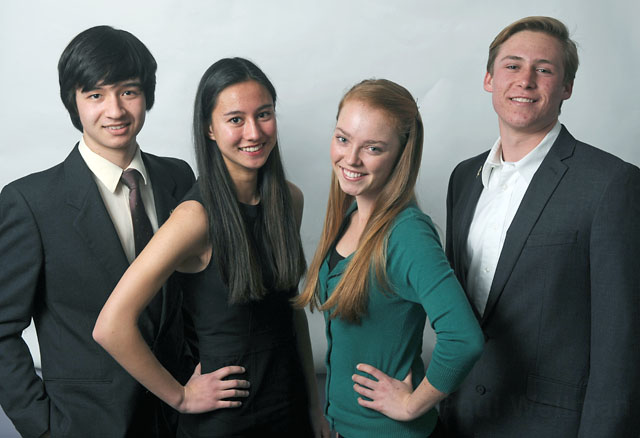Whiz Kids
S.B. Produces Embryonic Stem Cell Researchers

There was a time when it just took some baking soda and vinegar to make a kid feel like a scientist. Last summer, however, Dos Pueblos High School (DPHS) junior Robert Sumner was busy expressing genes in nematodes. His DPHS classsmates Léa Tran-Le and Madeline Matthys were respectively studying the spatial organization of cells in retinas and messing with mouse embryos, scientifically speaking, in the search for drug therapies that could treat blindness and polycystic kidney disease treatments. Ben Haslund-Gourley, a San Marcos High School student and aspiring surgeon, was busy designing a test that measures the pancreatic response to blood glucose that would be especially helpful to those with type 1 diabetes.
These four Santa Barbarans were the hometown heroes of UCSB’s Summer Research Institute, which is kind of like a summer camp where, instead of playing capture the flag, the campers perform cutting-edge research that could potentially lead to life-altering technologies. Ain’t no thang.
Sumner, Tran-Le, Matthys, and Haslund-Gourley were all working under the auspices of the California Institute for Regenerative Medicine (CIRM), created by California voters when they passed Prop. 71 in 2004 to fund stem-cell research after a conservative presidential administration balked at some of the ethically controversial aspects of the biotechnology. CIRM has made California a mecca for stem-cell researchers, and it paid for 12 new research facilities across the state, including the Center for Stem Cell Biology and Engineering at UCSB.
Mani Vessal, who in a prior life founded a startup nonprofit in Toronto that placed high school kids in laboratory-based internships, wanted to make sure that funding was put aside for school-aged researchers after he became a CIRM administrator. “University is too late to introduce [young adults] to cutting-edge science,” he said. Nine institutions, including UCSB, fold CIRM into their summer research-mentorship programs. Half of the participants must come from underrepresented groups, and they are eligible for stipends to make sure they have a “worry-free” summer, said Vessal.
The Santa Barbara kids shared their research at the annual CIRM conference, which was held at Stanford University last summer. It was a process that required them to write papers just like any professional scientist would. And then, this past Presidents’ Day weekend, they traveled to Boston to present at the American Junior Academy of Sciences. Mathys’s mom, a chemistry professor at UCSB, encouraged them to apply. Aside from sharing their work, they met other budding scientists from around the country and toured area colleges. For Tran-Le, the highlight was talking to physicist and inventor Stephen Wolfram. Sumner said he enjoyed the opportunity to learn about other areas of science.
While they haven’t all committed to being stem-cell researchers or even scientists — Matthys is a mock-trial star — they fulfilled Vessal’s goal of getting young people to think creatively, and they performed the same work that professionals do. (Some of CIRM’s high school students do better work than graduate students, said Vessal.) As a matter of fact, Haslund-Gourley is still conducting cancer research at UCSB under life sciences professor Jamey Marth.



